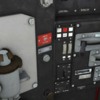Like many, I was saddened by the recent news from MTH. I am totally bought in to MTH products, particularly MTH motive power. A great value and the reason I switched from HO. But this thread is not about that. More to the point, what happens to DCS? I know the employees have announced plans to continue the DCS product line and that helps ease the pain. But recently I started to wonder is more DCS really what I want going forward? Don’t get me wrong, I love controlling my DCS engines with wifi. But will I still think that in 5 or 10 years from now? Maybe not. I don’t think switching to DCC is the answer, at least not one I am thrilled about. DCC is now decades old technology. Time to move on in IMO. I like the innovation in LC+ 2.0, especially the BT option. Even though I don’t yet own one, I like the idea that I can mix LC+ 2.0 motive power with DCS without purchasing a new control system. But as I understand it, you cannot control multiple engines from one device at the same time with BT. Please correct me if I am wrong on this.
So what’s next? I’d be thrilled if DCS, or a new, independent control system, were to be re-imagined with radio control. Imagine using the current DCS wifi concept, but instead of controlling today’s TIU, the wifi module would control an engine interface unit (EIU) that sends radio commands directly to individual engines. Of course, each engine would need to be modified with a receiver that would have to be synched with the EIU. The concept would not be unlike how the RC airplane hobby has evolved. Furthermore, under this concept it would be easy, and optional, to transition from track power to battery power since command signals would no longer be sent through the rails. Cars, power tools, lawn mowers, RC airplanes, etc are all powered with modern battery technology. Some are already using battery power for their O Gauge railroads. Is it time to bring that technology to the masses? Track power could be retained to power accessories, car lights, etc.
Will MTH closing the doors be a catalyst for new technologies for train control and power that are independent of from the train manufacturer? For instance, the RC airplane hobby has a “plug and play” concept. The hobbyist just needs to add a receiver with corresponding transmitter and a battery for power. Of course, there are options to have that all in one package with the plane, but it does not have to be.
I do not claim to be an expert on control systems in any way. My thinking could be way off on what the range of possibilities are. I do hope to be able to enjoy my trains for years to come and I look forward to what new technologies will be introduced to control and power our trains.






